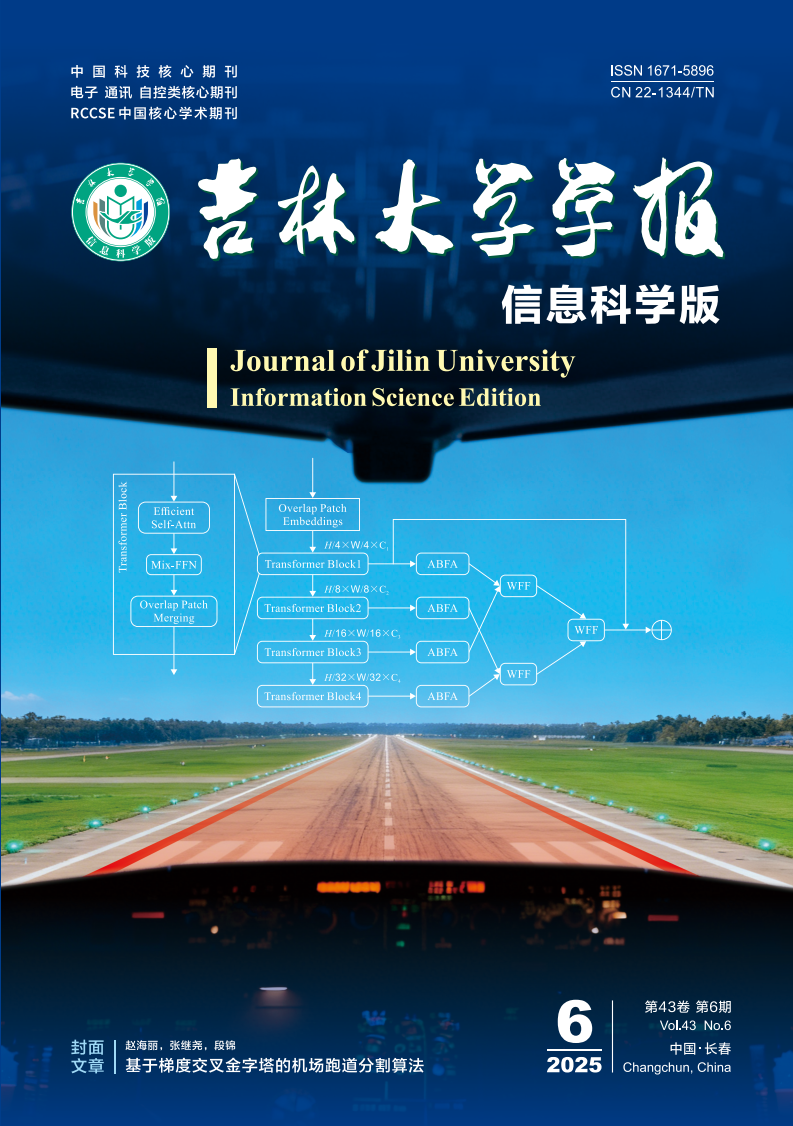Information
WeChat

WeChat: JLDXXBXXB
随时查询稿件状态
获取最新学术动态
Highlights
 Adaptive Detection Method for Concept Evolution
Based on Weakly Supervised Ensemble——WANG Jing , GUO Husheng , WANG Wenjian
Adaptive Detection Method for Concept Evolution
Based on Weakly Supervised Ensemble——WANG Jing , GUO Husheng , WANG Wenjian
 Adaptive Density Peak Clustering Band Selection
Method Based on Spectral Angle Mapping and Spectral Information Divergence——YANG Rongbin, BAI Hongtao, CAO Yinghui, HE Lili
Adaptive Density Peak Clustering Band Selection
Method Based on Spectral Angle Mapping and Spectral Information Divergence——YANG Rongbin, BAI Hongtao, CAO Yinghui, HE Lili
 Research on Precise Positioning of Ultra Wide
Band with Signal Interference——ZHANG Ailin , LIU Hui , WANG Xiaohai , ZHANG Xiuyi , QIU Zhengzhong , WU Chunguo
Research on Precise Positioning of Ultra Wide
Band with Signal Interference——ZHANG Ailin , LIU Hui , WANG Xiaohai , ZHANG Xiuyi , QIU Zhengzhong , WU Chunguo
 Control Drive System of Optical Crossbar Chip Based on DAC Array——OUYANG Aoqi , Lv Xinyu , XU Xinru , ZENG Guoyan , YIN Yuexin , LI Fengjun , ZHANG Daming , GAO Fengli
Control Drive System of Optical Crossbar Chip Based on DAC Array——OUYANG Aoqi , Lv Xinyu , XU Xinru , ZENG Guoyan , YIN Yuexin , LI Fengjun , ZHANG Daming , GAO Fengli
 Novel Reinforcement Learning Algorithm:
Stable Constrained Soft Actor Critic——HAI Ri , ZHANG Xingliang , JIANG Yuan , YANG Yongjian
Novel Reinforcement Learning Algorithm:
Stable Constrained Soft Actor Critic——HAI Ri , ZHANG Xingliang , JIANG Yuan , YANG Yongjian
 BNN Pruning Method Based on Evolution from Ternary to Binary——XU Tu, ZHANG Bo, LI Zhen, CHEN Yining, SHEN Rensheng, XIONG Botao, CHANG Yuchun
BNN Pruning Method Based on Evolution from Ternary to Binary——XU Tu, ZHANG Bo, LI Zhen, CHEN Yining, SHEN Rensheng, XIONG Botao, CHANG Yuchun
Current Issue
Journal Online

 Guide to Authors
Guide to Authors


